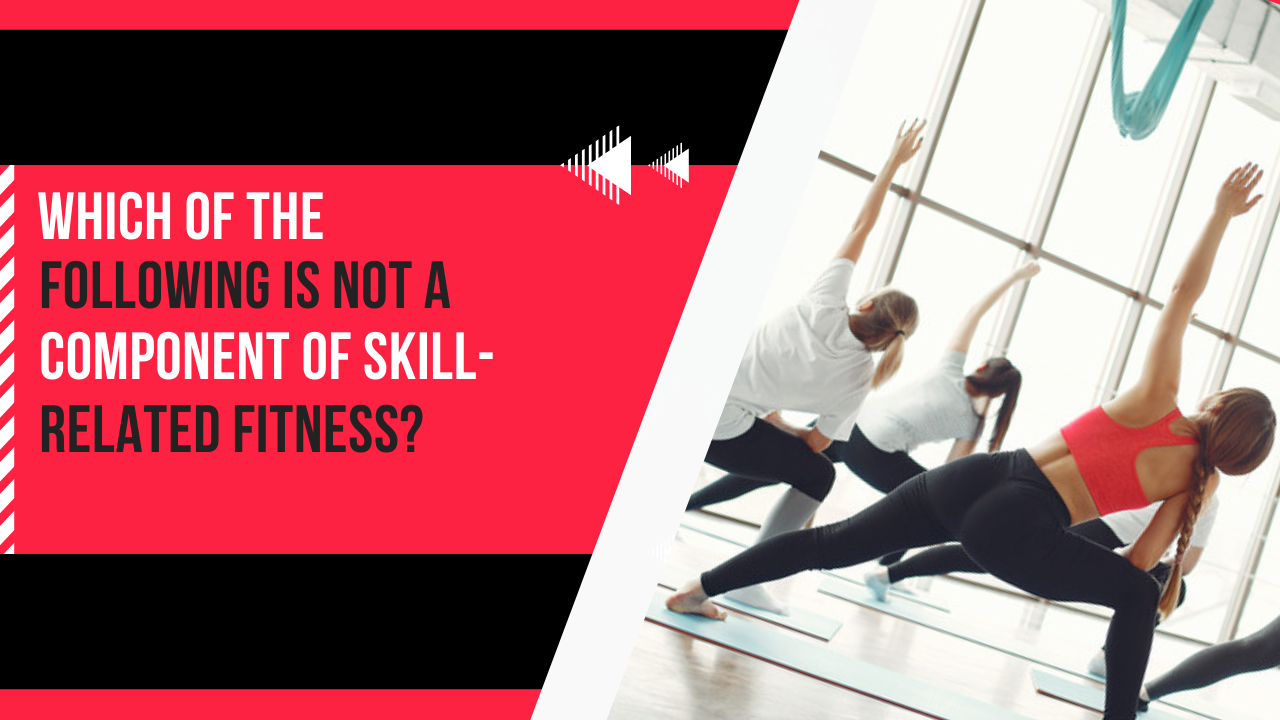Which of the Factors Below is Not Critical in Developing Good Physical Fitness?
Physical fitness is a cornerstone of a healthy and fulfilling life. It encompasses various elements that contribute to the body’s ability to function efficiently and effectively in daily activities. Achieving good physical fitness requires understanding which factors are truly essential and which are not as critical. This article delves into the components of physical fitness and identifies the factors that are less critical in developing it.
Understanding Physical Fitness

Physical fitness is a comprehensive term that describes a state of health and well-being. It involves the ability to perform daily tasks with ease and efficiency. The key components of physical fitness are cardiovascular endurance, muscular strength, flexibility, and body composition. Each component contributes to overall health and functional capability.
Cardiovascular Endurance
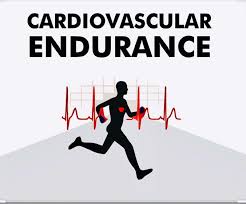
Cardiovascular endurance is the ability of the heart, lungs, and circulatory system to supply oxygen and nutrients to the muscles during sustained physical activity. This component is crucial for maintaining a healthy heart and improving the body’s ability to perform prolonged exercises. Cardiovascular endurance is often considered the foundation of fitness, as it affects overall health and vitality.
To improve cardiovascular endurance, consider incorporating the following activities into your routine:
Running: Running is a popular and effective way to boost cardiovascular health. It strengthens the heart and increases lung capacity. To start, try jogging for short distances and gradually increase the distance and intensity.

Swimming: Swimming is a low-impact exercise that works the entire body. It is an excellent option for individuals with joint issues or those looking for a full-body workout. Swimming regularly can improve cardiovascular endurance and muscle tone.

- Cycling: Cycling is an enjoyable way to enhance endurance while exploring the outdoors. Whether on a stationary bike or a traditional bicycle, cycling helps strengthen the legs and improve cardiovascular health.

Rowing: Rowing provides a full-body workout that challenges the cardiovascular system and strengthens the upper body, core, and legs. It’s a great way to build endurance and increase muscle strength.

Muscular Strength

Muscular strength refers to the ability of muscles to exert force during an activity. It is essential for maintaining good posture, balance, and overall physical performance. Strong muscles help with daily activities such as lifting, pushing, and pulling, and they also play a role in injury prevention.
To increase muscular strength, incorporate the following exercises into your routine:
Weightlifting: Weightlifting involves lifting weights to challenge and strengthen various muscle groups. It’s a versatile form of exercise that can be tailored to different fitness levels and goals. Beginners can start with lighter weights and gradually increase the resistance as they build strength.

Resistance Band Exercises: Resistance bands provide an effective way to improve strength without the need for heavy weights. They are portable and versatile, allowing for a wide range of exercises that target different muscle groups.

- Bodyweight Exercises: Bodyweight exercises, such as push-ups, squats, and lunges, use the individual’s body weight as resistance. These exercises are accessible and can be done anywhere, making them ideal for those without access to a gym.

Pilates: Pilates focuses on core strength, flexibility, and overall muscle conditioning. It is an excellent way to build strength while improving posture and body awareness.

Flexibility

Flexibility is the range of motion available in the joints and the ability of muscles to stretch. It is an essential component of physical fitness that enhances mobility and reduces the risk of injuries. Improving flexibility can lead to better posture, balance, and coordination, making it easier to perform daily activities.
To enhance flexibility, consider incorporating these activities into your routine:
Yoga: Yoga is a practice that combines stretching, breathing, and mindfulness. It promotes flexibility, relaxation, and mental well-being. Different styles of yoga cater to various fitness levels and goals, from gentle restorative yoga to more vigorous power yoga.

Pilates: In addition to building strength, Pilates exercises emphasize flexibility and balance. The controlled movements help lengthen muscles and improve joint mobility.

- Dynamic Stretching: Dynamic stretching involves active movements that stretch the muscles through their full range of motion. It is often used as a warm-up to prepare the body for exercise and improve flexibility.

Static Stretching: Static stretching involves holding stretches for a period to lengthen muscles and improve flexibility. It is commonly done after a workout to promote recovery and prevent stiffness.

Body Composition

Body composition refers to the ratio of fat to lean mass in the body. A healthy body composition indicates a lower percentage of body fat and a higher percentage of lean muscle mass. This component is important because it influences an individual’s overall health and risk of developing chronic diseases.
To improve body composition, consider the following strategies:
Regular Exercise: Combining cardiovascular exercises with strength training is effective for improving body composition. Cardio exercises help burn calories and reduce body fat, while strength training builds lean muscle mass.

Healthy Eating: Consuming a balanced diet with adequate nutrients is crucial for maintaining a healthy body composition. Focus on whole foods, such as fruits, vegetables, lean proteins, and whole grains, while limiting processed and high-calorie foods.

- Hydration: Staying hydrated supports metabolic processes and aids in weight management. Drinking enough water can help control appetite and promote a healthy body composition.

Sleep: Ensuring adequate rest is essential for recovery and muscle growth. Quality sleep helps regulate hormones related to appetite and metabolism, contributing to a healthy body composition.

Factors Influencing Physical Fitness
Numerous factors influence physical fitness, and understanding these factors can help individuals develop effective fitness routines. Some factors are more critical than others in achieving overall fitness. Let’s explore these factors and identify which ones are essential and which might be less critical.
Nutrition

Nutrition is a fundamental factor in physical fitness. It provides the energy and nutrients required for physical activity, muscle growth, and recovery. A balanced diet rich in vitamins, minerals, protein, carbohydrates, and healthy fats supports overall health and fitness goals. Proper nutrition is essential for maintaining energy levels and optimizing performance during workouts.
Key aspects of nutrition include:
Macronutrients: Proteins, carbohydrates, and fats are the primary macronutrients that provide energy and support bodily functions. Proteins are essential for muscle repair and growth, carbohydrates provide energy for physical activity, and healthy fats support hormone production and brain function.
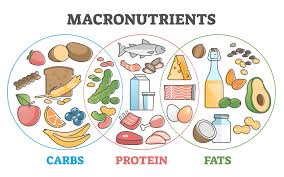
- Hydration: Drinking enough water is crucial for staying hydrated and supporting bodily functions. Proper hydration aids in digestion, nutrient absorption, and temperature regulation.

Meal Timing: Eating at regular intervals helps maintain energy levels and supports muscle recovery. Consuming a combination of macronutrients in each meal can help balance blood sugar levels and prevent energy crashes.

Exercise Routine
An effective exercise routine is critical for developing physical fitness. It should include a variety of exercises that target different components of fitness, such as cardiovascular endurance, muscular strength, and flexibility. Consistency in following an exercise routine is essential for making progress and achieving fitness goals.
Components of an effective exercise routine include:
Cardio Exercises: Cardio exercises, such as running, cycling, and swimming, increase heart rate and improve endurance. Aim for at least 150 minutes of moderate-intensity aerobic activity per week to support cardiovascular health.

- Strength Training: Strength training exercises, such as weightlifting and resistance band workouts, build muscle strength and power. Incorporate strength training into your routine at least two days per week to enhance muscle mass and bone density.
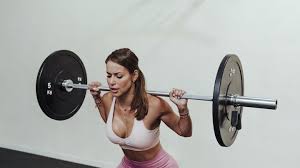
Flexibility Exercises: Flexibility exercises, such as stretching and yoga, enhance range of motion and prevent injuries. Regular flexibility training can improve posture and balance, making it easier to perform daily tasks.

- Balance and Coordination: Balance and coordination exercises, such as tai chi and balance drills, improve stability and movement efficiency. These exercises are particularly beneficial for older adults and those recovering from injuries.

Sleep and Rest
Sleep and rest are often underestimated in their importance to physical fitness. During sleep, the body undergoes essential repair and recovery processes. Adequate rest improves physical performance, mental clarity, and overall well-being. Lack of sleep can lead to fatigue, reduced performance, and increased risk of injury.
Benefits of adequate sleep include:
Muscle Recovery: During sleep, the body repairs and rebuilds muscles that have been stressed during exercise. Growth hormone, which plays a key role in muscle repair, is released during deep sleep.

Mental Clarity: Adequate sleep improves focus, concentration, and decision-making skills. It enhances cognitive function, which is essential for effective workouts and daily activities.

- Energy Levels: Quality sleep restores energy levels and enhances stamina. It helps regulate hormones related to energy balance, such as cortisol and insulin.

Hormone Regulation: Sleep helps regulate hormones that control appetite, metabolism, and stress response. Poor sleep can disrupt these hormones, leading to weight gain and decreased physical performance.

Hydration

Hydration is a critical factor in physical fitness. Water plays a vital role in regulating body temperature, lubricating joints, and transporting nutrients. Staying hydrated helps maintain optimal physical performance and prevents dehydration-related fatigue. It is essential to drink enough water before, during, and after exercise to stay hydrated.
Importance of hydration includes:
Temperature Regulation: Water helps regulate body temperature during exercise, preventing overheating and heat-related illnesses.

Joint Lubrication: Adequate hydration reduces the risk of joint pain and injury by providing lubrication and cushioning to the joints.

- Nutrient Transport: Water is essential for the efficient delivery of nutrients to cells and the removal of waste products from the body.

Performance: Staying hydrated enhances physical and mental performance, allowing individuals to exercise longer and with greater intensity.
Stress Management
Stress management is an often-overlooked aspect of physical fitness. High stress levels can negatively impact both mental and physical health, leading to poor fitness outcomes. Learning to manage stress through relaxation techniques and healthy coping mechanisms can improve overall well-being and enhance fitness progress.
Ways to manage stress include:
Meditation: Practicing mindfulness and relaxation techniques can help reduce stress and improve mental clarity. Meditation promotes a sense of calm and relaxation, which can enhance focus and concentration during workouts.

Deep Breathing: Deep breathing exercises help reduce stress and anxiety by activating the body’s relaxation response. Incorporating deep breathing into your daily routine can improve mood and overall well-being.

- Exercise: Engaging in physical activity releases endorphins, which are natural mood elevators. Exercise is an effective way to release tension and reduce stress levels.
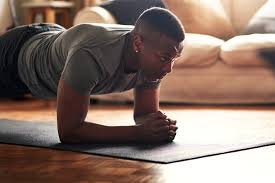
Hobbies: Pursuing activities that bring joy and relaxation can help reduce stress and promote a sense of well-being. Engaging in hobbies can provide a healthy outlet for stress and improve overall quality of life.

Non-Critical Factors in Physical Fitness
While many factors are crucial for developing good physical fitness, some are less critical. Understanding which factors are not essential can help individuals focus their efforts on what truly matters. Here are some factors that may not be as critical in developing good physical fitness:
Genetic Predisposition

Genetic predisposition refers to the genetic traits inherited from parents that may influence physical characteristics. While genetics can play a role in determining body type, metabolism, and athletic potential, it is not the sole determining factor in achieving fitness. With dedication and effort, most individuals can overcome genetic limitations and achieve their fitness goals. Lifestyle choices and consistent effort have a more significant impact on fitness than genetics alone.
Key points about genetics and fitness:
Influence: Genetics may influence certain traits, but they do not dictate fitness outcomes. Environmental factors and lifestyle choices have a more significant impact on overall fitness.

Potential: Everyone has the potential to improve fitness through hard work and dedication. Setting realistic goals and developing a personalized fitness plan can help individuals reach their full potential.

- Focus: Concentrating on controllable factors, such as nutrition, exercise, and lifestyle choices, is more beneficial than focusing on genetic limitations.

Adaptability: Fitness plans can be tailored to individual needs regardless of genetics. A personalized approach to fitness can help individuals overcome genetic limitations and achieve their goals.

High-Tech Gadgets
In recent years, technology has introduced various high-tech gadgets designed to aid in fitness tracking and monitoring. While these devices can provide valuable insights into performance and progress, they are not essential for achieving good physical fitness. Basic exercises and workouts can be done without expensive gadgets. The focus should be on consistent effort, proper technique, and listening to the body.
Examples of high-tech gadgets include:
Fitness Trackers: Devices that monitor steps, heart rate, and calories burned. While helpful, they are not necessary for achieving fitness goals.
Smartwatches: Wearable devices with fitness tracking capabilities. They can provide motivation and accountability but are not essential for success.

- GPS Devices: Tools for tracking distance and pace during outdoor activities. While useful for serious athletes, they are not necessary for beginners or casual exercisers.

Smart Scales: Scales that measure body composition metrics, such as body fat percentage and muscle mass. While informative, they are not critical for improving fitness.

Supplements and Enhancers
Supplements and performance enhancers are often marketed as quick fixes for improving fitness and achieving faster results. While some supplements can be beneficial for specific purposes, they are not critical for overall fitness. A balanced diet can provide the necessary nutrients for most individuals. Relying solely on supplements is not advisable, and it is essential to prioritize whole foods and a healthy lifestyle.
Common supplements include:
Protein Powders: Used to increase protein intake for muscle growth. While convenient, they are not necessary for individuals who consume adequate protein through whole foods.

Vitamins and Minerals: Supplements to support overall health. While beneficial for those with specific deficiencies, they are not essential for everyone.

- Pre-Workout Supplements: Products designed to boost energy before exercise. While they can enhance performance, they are not necessary for achieving fitness goals.

Creatine: A supplement used to enhance muscle performance. While effective, it is not essential for individuals who focus on proper nutrition and exercise.

Expensive Gym Memberships
Gyms offer a wide range of equipment and classes for individuals looking to improve their fitness. However, expensive gym memberships are not the only option for achieving good physical fitness. Home workouts, outdoor activities, and community centers can provide effective alternatives. Financial constraints should not hinder individuals from pursuing their fitness goals. With creativity and resourcefulness, anyone can develop a successful fitness routine without the need for a costly gym membership.
Alternatives to gym memberships include:
Home Workouts: Using bodyweight exercises and minimal equipment, such as dumbbells or resistance bands, individuals can create effective home workout routines.

Outdoor Activities: Engaging in activities like walking, jogging, hiking, or cycling in nature can provide both physical and mental benefits.

- Community Centers: Many community centers offer affordable fitness classes and facilities, providing access to exercise opportunities without the cost of a gym membership.

Online Resources: The internet offers a wealth of free workout videos, tutorials, and fitness programs that can be accessed from home.

Conclusion
In conclusion, developing good physical fitness involves several critical factors, including nutrition, exercise routine, sleep, hydration, and stress management. These elements are essential for achieving overall well-being and reaching fitness goals. While some factors, such as genetic predisposition, high-tech gadgets, supplements, and expensive gym memberships, may offer benefits, they are not critical in the pursuit of physical fitness. By focusing on consistent effort, healthy lifestyle choices, and personalized fitness plans, individuals can achieve their fitness goals regardless of non-critical factors. Fitness is a journey, not a destination, and everyone has the potential to improve their physical fitness with dedication and determination. Prioritizing the essential factors and maintaining a balanced approach to fitness will lead to long-term success and improved quality of life.
By understanding the importance of each factor and recognizing which are less critical, individuals can develop effective fitness strategies tailored to their unique needs and goals. Ultimately, the key to success lies in commitment, perseverance, and a positive attitude toward health and fitness.





